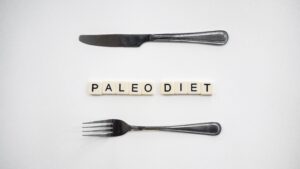Introduction:
In the ever-evolving landscape of diets, the Paleo diet has garnered considerable attention for its purported benefits, particularly in the realm of weight loss. Advocates of this dietary approach argue that it mirrors the eating habits of our ancestors, promoting overall health and well-being. However, like any nutritional regimen, the Paleo diet comes with its set of pros and cons. Let’s delve into the intricacies of this diet trend and evaluate its impact on weight loss.

Pros of the Paleo Diet for Weight Loss:
Whole, Nutrient-Dense Foods
- The cornerstone of the Paleo diet is consuming whole, unprocessed foods. This includes lean meats, fish, fruits, vegetables, nuts, and seeds. These nutrient-dense options can contribute to a feeling of fullness, potentially reducing overall calorie intake and aiding in weight loss.
Elimination of Processed Foods
- By excluding processed foods, refined sugars, and grains, the Paleo diet eliminates sources of empty calories and refined carbohydrates. This can help regulate blood sugar levels, prevent energy crashes, and promote a more stable metabolism conducive to weight loss.
Increased Protein Intake
- The emphasis on lean meats in the Paleo diet ensures a higher intake of protein, which is known to promote satiety and preserve lean muscle mass. This may contribute to a more efficient weight loss process, as protein-rich diets often lead to increased metabolism and reduced appetite.
Potential Reduction in Inflammation The diet’s focus on anti-inflammatory foods may have positive effects on overall health. Inflammation has been linked to obesity, and by mitigating this factor, the Paleo diet may indirectly support weight loss efforts.

Cons of the Paleo Diet for Weight Loss:
Restrictive Nature
The strict guidelines of the Paleo diet can be challenging to adhere to, potentially leading to feelings of deprivation. Such restrictions may make it difficult for individuals to sustain the diet in the long term, hindering consistent weight loss efforts.
Limited Carbohydrate Options
- The exclusion of grains and legumes may result in lower carbohydrate intake. While this can be advantageous for some, individuals with high energy demands (such as athletes) may find it challenging to fuel their workouts adequately, potentially affecting their ability to exercise consistently for weight loss.
- https://www.youtube.com/watch?v=MGvJ61nBFBo
Nutrient Gaps
The elimination of entire food groups, such as dairy and grains, raises concerns about potential nutrient deficiencies. For example, calcium and vitamin D are essential for bone health and are commonly found in dairy products, which are restricted on the Paleo diet. Nutrient gaps could impact overall health and potentially compromise weight loss goals.
Expense and Accessibility
- Affordability and accessibility of certain Paleo-approved foods, such as grass-fed meats and organic produce, can be limiting factors. This may pose challenges for individuals on a budget, potentially impacting their ability to adhere to the diet consistently.
Conclusion:
In the realm of weight loss, the Paleo diet presents a mixed bag of advantages and challenges. Its emphasis on whole, nutrient-dense foods can certainly support a healthy weight loss journey. However, the restrictive nature of the diet, coupled with potential nutrient gaps, may make it less sustainable for some individuals.
Ultimately, the key to successful weight loss lies in finding a dietary approach that aligns with individual preferences, lifestyle, and health needs. While the Paleo diet may yield positive results for some, it’s essential to weigh its pros and cons carefully and consider alternative approaches that provide a balanced and sustainable path toward achieving and maintaining a healthy weight.
1 thought on “Pros and Cons of Paleo Diet for Weight Loss”